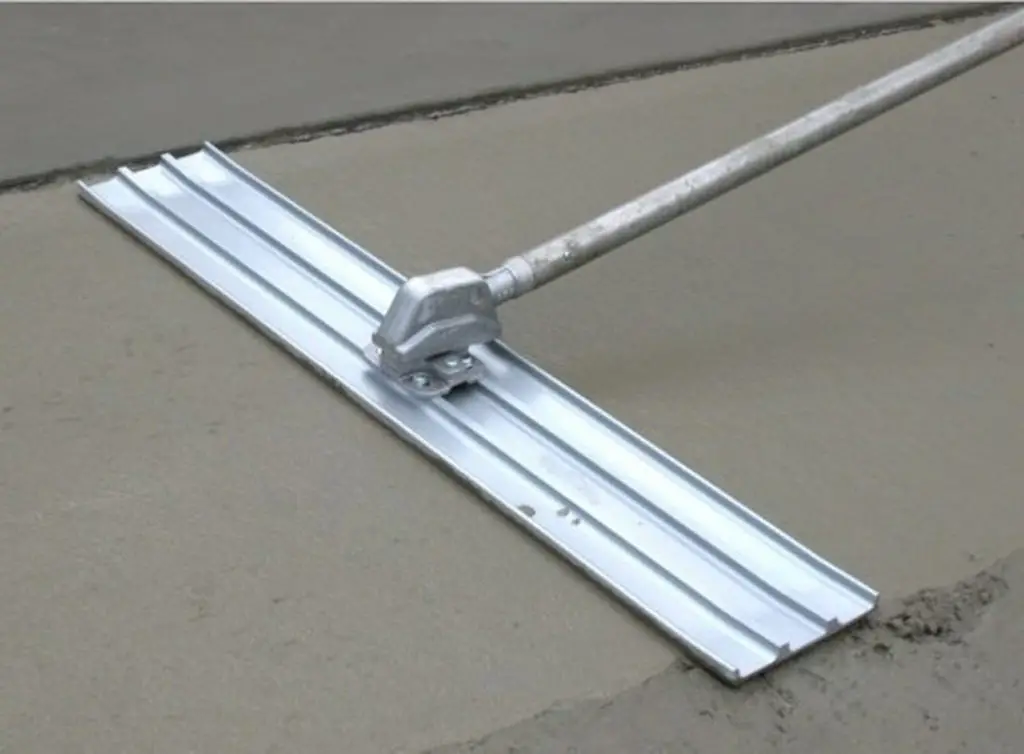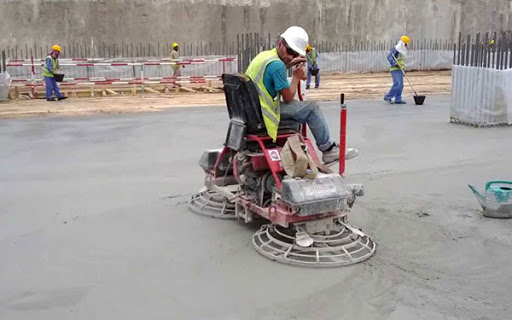Concrete Float | Power Floating Concrete | Power Float Vs Polished Concrete
Power Concrete Float | Floating Concrete Screed Finish |Float Trowel Vs. Concrete Float
Concrete Float
A concrete float is a tool used to smooth the surface of concrete. After leveling the surface with a screed, a float is utilized. Along with smoothing out surface defects, floating compacts the concrete in preparation for subsequent stages.
A float can be a small hand tool, a larger bull float with a long handle, or an engine-powered power trowel (also known as a power float). Generally, concrete floats are composed of magnesium, aluminum, or wood.
Power Floating Concrete
What is power floated concrete?
Power float concrete is a type of concrete finish achieved through the use of a machine designed to smooth and to some extent level a newly laid but hardened concrete floor after all bleed water has evaporated; a power float machine achieves this buffed and polished finish through the use of rotating circular pans.
A Power Float is an electric or petrol driven machine that, from a distance, looks rather like a rotary hover mower. It is a human driven machine that is used to polish in-situ concrete beds with a smooth, dense, and level surface finish.
Power floating eliminates the need for a finishing screed and is a more efficient and labor-intensive procedure than hand troweling.
The technique of power floating concrete floors utilizes a power trowel, a finishing machine that is used to smooth and even the surface of the concrete to an extremely high tolerance.
Power floating concrete is a method that is done to newly built concrete to ensure that the surface is as flat and smooth as possible.
It is accomplished with the use of a Power Float Machine, which actually cuts away the top layer of the concrete surface, leaving a clean flat finish.
Why Should You Use Power-Floated Concrete?
While power floating concrete makes a concrete surface flatter and smoother, it also makes it denser. This results in a longer-lasting, more appealing, and easier-to-maintain surface.
Power floating concrete is perfect for manufacturing and commercial sectors that require a durable and appealing surface. For instance, warehouses, commercial centers, factories, airports, and parking lots, among others.
How to do Power Floating Concrete
Timing is critical in the power floating concrete process. If the surface is excessively dry, the machine will have difficulty removing the high spots, and the floor will be unable to reabsorb the cement particles. If the surface is too damp, the machine will just tear it apart.
You must wait until the surface is sufficiently dry to support a person walking on it yet sufficiently moist to leave a footprint imprint of between 3 and 5mm.
The Power Floating procedure is divided into two stages: floating and finishing. Each phase requires a unique blade.
The machine is furnished with floating blades and the blades are adjusted at a flat angle to create suction on the concrete surface during the Floating phase.
After that, the machine goes up and down the surface, leaving circular imprints on the floor. When operating a walk behind machine, the operator should step backwards to eliminate footprints.
Before proceeding to the Finishing phase, we must wait for the concrete to dry further, until walking on it leaves no trace. The Power Float is furnished with finishing blades.
Power Floated Concrete Finish
The finishing is accomplished through a series of passes across the floor, gradually increasing the angle of the blades.
The greater the angle of the blade, the more difficult the finish. Finishing continues until the desired smoothness and hardness are achieved.
The concrete floor is now allowed to cure for approximately 28 days.
Power Float Vs Polished Concrete
Power floated or power troweled concrete is not the same as polished concrete. Polished concrete begins with a power trowel finish and then through a polishing process that may include up to seven separate phases of diamond polishing interspersed with the application of a densifier and a sealer.
As a result, a highly polished, thick, abrasion-resistant, and highly reflecting floor surface is created.
Polished concrete can be treated with a variety of diamond grades to provide a finish ranging from a’salt and pepper’ appearance to a highly polished ‘super or premium’ appearance, or anything in between.
Advantages of Polished Concrete
- Aesthetically pleasing
- Easily cleaned
- Easily maintained
- High abrasion resistance
- Scratch resistant
- Stain resistant
- Light reflective
- Durable
- Numerous levels of polish available
When Should You Float Concrete?
When you’re through grooving and edging, float the concrete. Floating eliminates the edge markings and puts the surface one step closer to completion. If the concrete begins to firm, you may need to bear down on the float.
What Are Concrete Floats Made of?
Magnesium, aluminum, or wood floats are the most often used materials for decorative concrete work. Stainless steel, rubber, and laminated wood or canvas resin are less frequently used float materials. Bull floats feature a long handle that is used to push or pull the float across huge expanses of concrete.
How Much Does a Concrete Float Cost?
A 4-foot magnesium bull float with bracket costs between $100 and $125, while a 14-inch magnesium hand float costs $18. Wood floats are priced differently depending on the type of wood used, but are normally less expensive than magnesium.
What Is the Difference Between a Trowel and a Concrete Float?
A concrete float has a wider base than a trowel and is typically composed of plastic, sponge, rubber, wood, or magnesium – a light grey metal. It is used to level the surface of plaster or concrete, to make it firmer, and to impart any desired texture. The finish will be determined by the float selected.
What is the Purpose of Floating Concrete?
A concrete float is a tool used to smooth the surface of concrete. After leveling the surface with a screed, a float is utilized. Along with smoothing out surface defects, floating compacts the concrete in preparation for subsequent stages.
What May Occur If a Slab Is Floated Too Soon?
Premature finishing or inappropriate first bull floating or second floating frequently leads in the entrapment of rising bleed water and air beneath the concrete’s top surface.
When this occurs, the weak or soft zone beneath the surface of the concrete causes it to flake or scale off.

